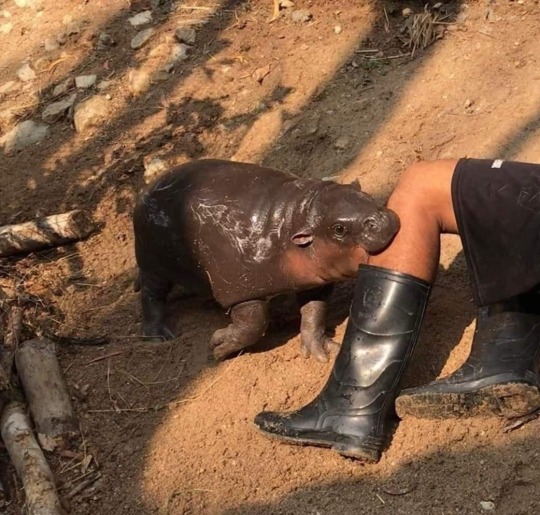Text
there should be a way to enable anons but only from ur mutuals. u wont know who said it but u know its coming from inside the house
51K notes
·
View notes
Text
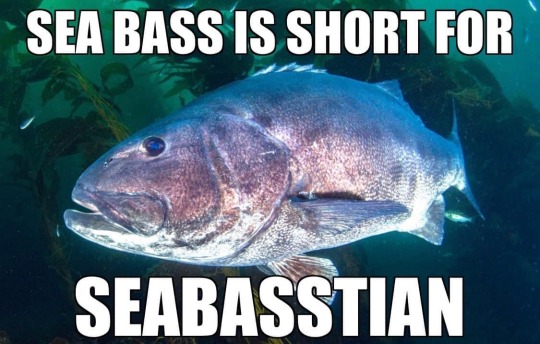

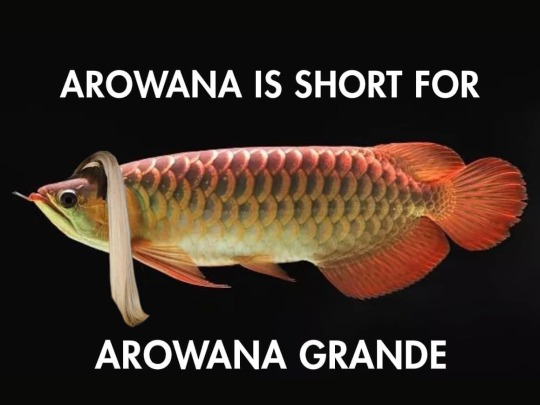



I've been collecting these for a few weeks and I NEED MORE
151K notes
·
View notes
Text
"ooh you hate cops but who are you gonna call when you get robbed?" uhhhhh your moms house? a great tragedy has befallen me and i need to have sex immediately
118K notes
·
View notes
Text
I love driving at the exact speed limit and having speeders behind me get frustrated. i will get to my destination when I get to my destination and so will you. im teaching you patience right now. you should be listening & learning.
76K notes
·
View notes
Text
what is it about being on a plane that makes people go buckwild for ginger ale literally everyone be ordering it
251K notes
·
View notes
Photo
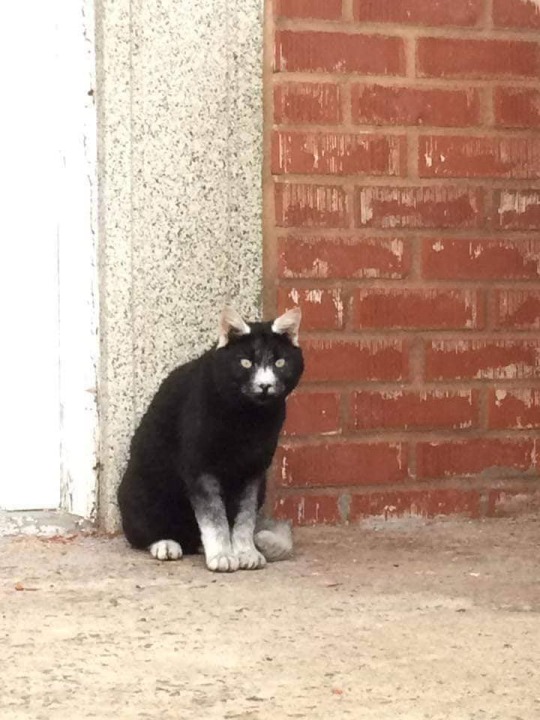

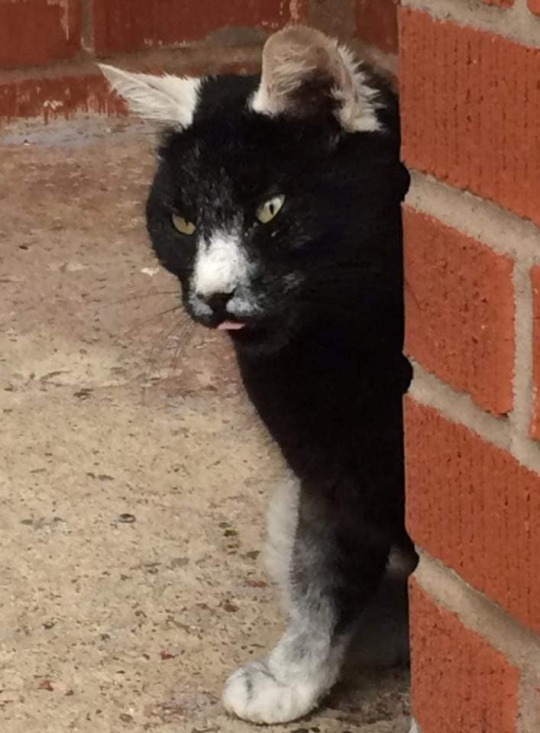
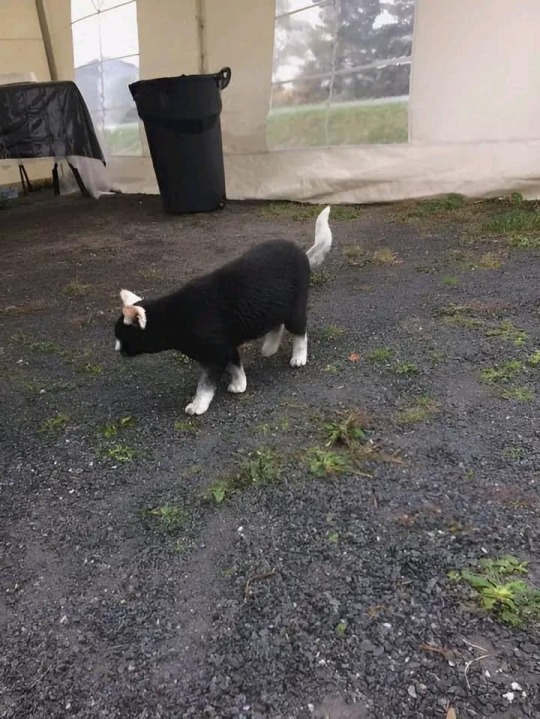
Unusual cat gene that seems to occur naturally in Poland and Romania. This gene is called Karpati. More can be read here
47K notes
·
View notes
Text
I am a friend to all cats. Yes even the mean ones. They have their reasons.
126K notes
·
View notes
Photo

Your name is Helly R. and you’re new here
10K notes
·
View notes
Text
Severance is about rebellion, about people who were literally created to obey finally questioning and breaking through that conditioning. There’s a storyline about someone doing a complete 180 and choosing to rebel when they realise they have a child that they’re not allowed to see, and I love that the storyline wasn’t given to the female lead, but to a previously comic male character. There’s a storyline about breaking protocol because for the first time ever you have fallen in love, in intense, overwhelming, impossible love, and I love that the storyline wasn’t given to the female lead, but to a pair of awkward old guys. The storyline about grief and guilt also goes to a guy, to the male lead.
I love that the female lead is the only one whose radicalisation comes entirely from within, the person motivating her is her, she’s not doing it for anyone else, she wants her freedom, and failing that, she wants bloody revenge even at the cost of utter self-destruction.
10K notes
·
View notes
Text
people have the audacity to equate vanilla with “plain”. the fruit of a delicate orchid pollinated by hand. worth its weight in solid gold and beyond. the fussy black-and-cream jewel of the american continent. you sick son of a bitch. imagine a world without vanilla. no blondies. no pound cakes. no crème brûlée, no coke floats. no cream soda. no satiny new york-style cheesecakes. no warm apple pie à la mode. no velvety complexity to bring out complex notes in chocolate desserts. no depth of flavour in your cakes and cookies and milkshakes. all in just a few precious seeds or grams of paste or perfumed teaspoons of liquid black platinum. what you don’t understand could fill the library of alexandria seven times over and then some. you ungrateful bastard i’m going to kill you
94K notes
·
View notes
Text

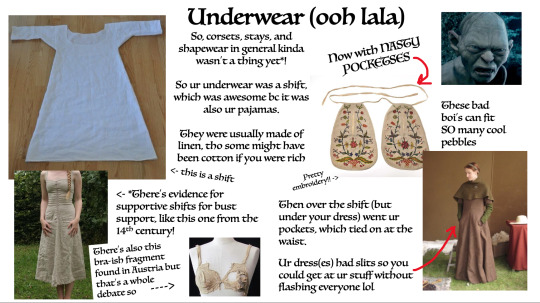
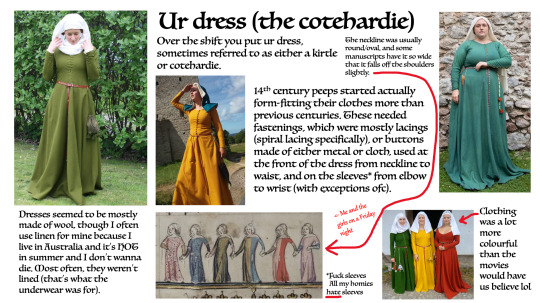
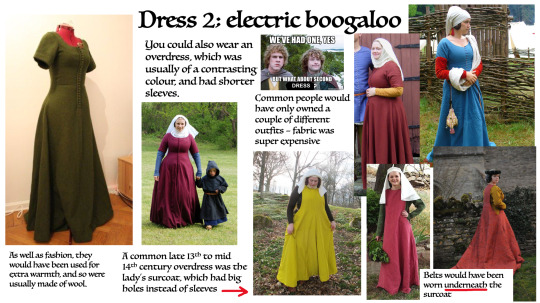



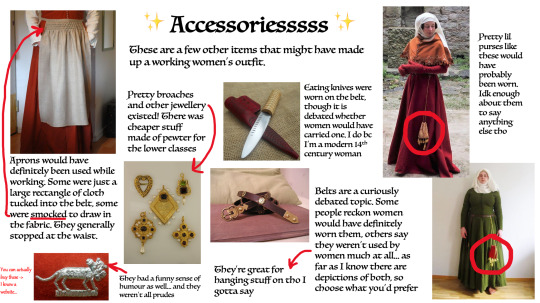
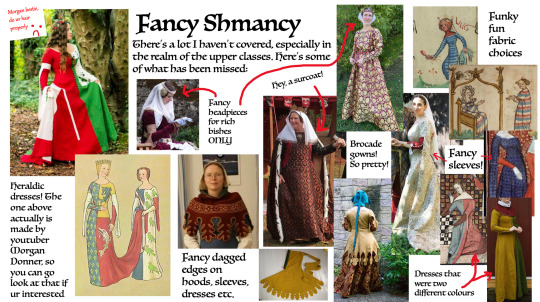
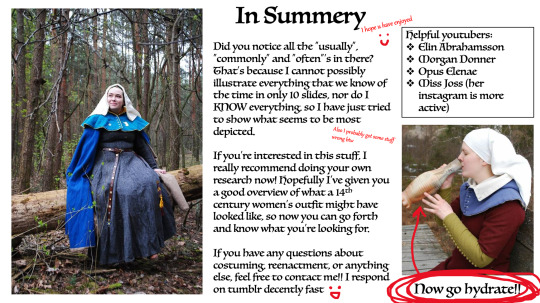
If you’re on mobile, you may have to click on the images for better quality!
Plain text version with image descriptions is under the cut.
Please note that the image descriptions will be reflecting what I am trying to convey with the photo, rather than the total look of the photo itself. For example if I am trying to describe a dress, the hair colour of the person wearing it will be ignored. This is to reduce the total word count of the descriptions, because I have a lot of images to describe. On this note, I have also streamlined the information as much as possible.
[Plain text description:]
First slide: Mariota’s Guide to 14th Century (Medieval) Women’s Clothing
This slideshow is brought to you by @the-merry-otter on tumblr
ALRIGHT LISTEN UP MOTHERS AND FUCKERS. I’m bored, so today we’re going to be talking about medieval clothing. Specifically fourteenth century English clothing because that’s what I’m good at. (Source: trust me bro I’m a reenacter). Also this is all female stuff - sorry masc leaning folks, I’ll get to you someday!
Disclaimer: this is not completely comprehensive or nuanced in the slightest, it’s just a quick overview guide. Do your own research xoxo.
[Image ID: to the left is a picture of a woman in a light blue dress and a pink hood gazing out at a lake. The hood has a skirt that falls over her shoulders, and there is along thin pipe attached to the back of the hood that dangles to her knees. The edges of the hood are decorated with burgundy crochet. The picture is captioned “beautiful, stunning, gorgeous, literal goals.” End ID]
[Image ID: To the right is a picture of a typical renn faire outfit. It has a white poofy underdress, a black corset, and a brown skirt. There is a red cross drawn over the image. It is captioned “very pretty, but definitely not medieval sorry!” End ID]
Second slide: Underwear (ooh la la)
Now with nasty pocketses
[Image ID: a picture of gollum, from lord of the rings, snarling in disgust. There is a line in The Hobbit where he asks Bilbo what he has in his nasty little pocketses, which is what I am referencing. End ID]
So, corsets, stays, and shapewear in general kind of wasn’t a thing yet. So your underwear was a shift, which was awesome because it was also your pajamas. They were usually made of linen, though some might have been made of cotton is you were rich.
[Image ID: A plain white linen garment laid out flat on the floor. It is a dress that hangs to about knee length, with elbow length sleeves. An arrow points to it with text reading “this is a shift”. End ID]
There is evidence for supportive shifts for busy support, like this one from the fourteenth century!
[Image ID: a second shift, worn by a female presenting person. It is laced up the front, and is a lot tighter and more fitted, especially around the bust. It has straps instead of sleeves. End ID]
There’s also this bra like fragment found in Austria, but that is a whole debate so.
[Image ID: A bra-like garment fitted to a mannequin. It seems to be made out of white linen, coloured with time. The left cup is damaged, and overall the garment looks incomplete. End ID]
Then, over the shift, yet under your main dress went your pockets, which tied on at the waist. Your dresses had slits do that you could get at your stuff without flashing everyone lol.
[Image ID: A picture of medieval pockets. They are upside down teardrop shaped, but the point is flat and is part of the waist ties. There are slits in the side up the top to access the inside. They are cream coloured with bright floral embroidery. The caption reads “these bad boys can fit so many cool pebbles.” End ID]
[Image ID: A young female-presenting person wearing medieval clothing. She has her hands in the pocket slits of her dress. They are just below hip height. End ID]
Third slide: your dress, or the cotehardie. (Pronounced coat hardy)
Over the shift you put your dress, sometimes referred to as either a kirtle or cotehardie. 14th century people started actually form-fitting their clothes more than previous centuries. These needed fastenings, which were mostly lacings (spiral lacings specifically), or buttons made of either metal or cloth, used at the front of the dress from neckline to waist, and on the sleeves from elbow to wrist, with exceptions of course.
(Sidenote: fuck sleeves, all my homies hate sleeves)
[Image ID: a woman in a warm yellow dress to the left of the text. The dress is constructed simply, with a single piece of fabric used for the length of the body so there is no waist seam. The skirt is widened by inserting four triangles, one each at the front and back, and one on each side. The front has buttons made of the same fabric as the dress, that go down to the belt at the waist. The sleeves have similar buttons from wrist to elbow, on the outside of the arm. The woman is also wearing a liripipe hood. End ID]
Dresses seemed to be mostly wool, though I often use linen for mine because I live in Australia and it’s hot in summer and I don’t want to die. Most often they weren’t lined (that is what the underwear was for).
[Image ID: in the top left of the slide is a woman wearing a green woollen dress. It is constructed the same as the previous image, except it has spiral lacing on the front instead of buttons. The sleeves are fastened by three small buttons. She is wearing a simple and veil. End ID]
[Image ID: the top right of the slide shows a woman in a teal coloured dress, similar to the one before. This one has metal buttons at the sleeves and down the front. She wears a veil only. End ID]
The neckline of these dresses was usually round or an oval shape, and some manuscripts have it so wide that it falls off the shoulders slightly.
[Image ID: A photo of a medieval manuscript, depicting six medieval ladies in a row holding hands. The neckline of their dresses is wide enough that the tops of their shoulders are visible. The image is captioned “me and the girls on a Friday night”. End ID]
Clothing was a lot more colourful than the movies would have us believe lol.
[Image ID: Three women, each in dresses similar to the ones before. To the left is a forest green, the middle one is bright saffron yellow, and the one to the right is a vibrant tomato red. End ID].
Fourth slide: Dress two; electric boogaloo
[Image ID: Merry and Pippin from lord of the rings. Above them, meme text reads “we’ve had one, yes”, and then continues below with “but what about second dress?”. End ID]
You could also wear an overdress, which was usually of a contrasting colour and had shorter sleeves.
As well as fashion, they would have been used for extra warmth, and so were usually made of wool.
[Image ID: a woman in a maroon coloured dress like the ones on the previous slide. The sleeves stop just above her elbow, revealing a blue dress underneath. End ID].
Common people would have only owned a couple of different outfits, as fabric was super expensive.
[Image ID: various pictures of women with examples of an overdress. They are all constructed the same as the overdress, but with shorter sleeves that reveal a second sleeve of a different colour underneath. End ID]
A common late thirteenth to mid fourteenth century overdress was the ladies surcoat, which had big holes instead of sleeves.
Belts would have been worn underneath the surcoat.
[Image ID: three photos of women wearing surcoats. They are normal dresses, except there is a large D shape cut out of either side, leaving a large hole from the shoulder to below the hip. They have no buttons down the front. One of the surcoats is made of red brocade, and obviously belongs to an upper-class impression. End ID].
Fifth slide: Hair and headwear
Hair was worn braided and pinned up, with a coif (cap) and either a wimple or veil, or both. The wimple and/or veil were usually pinned to the coif, or secured on a band of fabric around the head.
Veils would be either oval, or a D shape. Wimples were rectangular. A wimple goes under the chin and a veil goes over your head.
[Image ID: a close up of a woman wearing a wimple. It is made of a light fabric, likely silk. The wimple wraps under her chin and is secured at the back of her head. A narrow band of fabric or possibly leather circles her brow, which would have been used to secure the wimple. End ID.]
[Image ID: A picture of YouTuber Morgan Donner wearing a wimple and veil. The wimple wraps under her chin, and the veil is placed on top of her head, draping down past her shoulders. It does not cover her face. Loops of hair are visible either side of her face. End ID]
All the headwear would be made of linen, thin wool, or silk, depending on class. The veils could also be made really fancy by ruffling the front edge or by attaching pearls.
[Image ID: a woman in a wimple and half-circle veil. The edge of the veil that frames her face is elaborately ruffled. The edge of a coif is visible under the veil. End ID]
I ride the bus in my medieval gear a lot because of events, and way too many people think I’m Amish because of my veil. It’s honestly just funny at this point. I should keep a tally.
[Image ID: a woman wearing a St Birgitta’s coif, pinning a wimple at the back of her head. The coif is a simple white linen cap that encloses the head, with a line of lace down the centre of the head. It is secured with a loop of linen around the head. End ID].
[Image ID: a picture of someone with plaits that have been pinned around the head like a crown. It is captioned “you could also pin your hair up like this”. End ID]
Working women might have just wrapped their head in a scarf instead, fuck this fancy shit right?
[Image ID: a woman in a headscarf that has been twisted and then looped around the front of her head. It is captioned #girlboss. End ID].
Fake braids were a thing! Blonde hair in particular was very fashionable, and bleaching or fake braids were sometimes used to achieve that.
[Image ID: two fake braids made of a coarse fibre. They are blonde in colour, and are looped like a hairstyle seen on many of the reenactors. They have white ribbons attached to the top end to help secure them to the head. End ID]
Sixth slide: Cloaks and hoods
These would have actually been two seperate garments! Integrated hoods on cloaks didn’t actually become a thing until the … seventeenth century or so? (Citation needed).
Cloaks were a lot simpler than the typical cloak we think of nowadays. Often they were just a rectangle of wool, or by the fourteenth century, sometimes a half circle.
They were almost always wool as far as I know, and were generally fastened by a cloak pin or buttons.
[Image ID: a metal cloak pin. It is a circle with a small opening at one point. A long pin is attached via a loop, allowing it to slide along the pin. It can fit through the opening in the circle. To use one, you would gather the fabric on the pin, and then slot the circle over the pin and then turn it, so the fabric is trapped between circle and pin. This is much easier to demonstrate than describe. The picture is captioned “these bad boys are the real MVP’s though”. End ID].
[Image ID: a diagram showing the construction of the bocksten man cloak. It is a half circle pieced together by laying strips of fabric together. In the centre of the flat side, a half circle is cut out for the neck. End ID]
[Image ID: a reconstruction of the bocksten man cloak. It is orange wool, and lined with an off-white linen. It is fastened on the right shoulder by three fabric buttons. It would fall to just above the wearers knees. End ID].
Women’s hoods could be short and open, or with a longer skirt and closed with buttons. Liripipe (pronounced leery-pipe) hoods were named for the tube of fabric that dangled off the back of your hood, varying in length. As well as a fashion statement, it could also be wrapped around the neck like a scarf if it got cold.
Hoods were nearly always wool I’m pretty sure, though they were often lined with linen, silk, or cotton.
[General description: a short liripipe hood would be open, with the bottom only reaching your shoulders. They were made from a single piece of fabric that would wrap over your head, with the seam down the centre back of your head. It was flared at the bottom by inserting triangular gores. At the front edge near your face there would be a strip jutting out that went from one side of your chin, over your head, and down to the other side. This would usually be folded back, revealing the lining colour. The bottom of the hood could either just reach the base of your neck, or reach down to just past your shoulders. The former would usually be open at the front, with fastenings optional. The latter option with the longer skirt was almost always able to be fastened up the front with fabric buttons. The liripipe itself was a thin flat tube of fabric fastened at the centre top back of the hood. End ID]
Fun fact, 90% of why I decided to reenact the fourteenth century specifically was because of liripipe hoods.
Seventh slide: Feet (not in a weird way)
Hose were used to keep your legs warm. For women they were usually knee height, and fastened just underneath it with a garter or tie.
[Image ID: a single light yellow hose, belted beneath the knee with a leather garter. The seam is down the centre back of the leg going all the way to your toes, and then around the top of the foot in front of where it connects to your leg. End ID]
Hose usually would have been made from wool, and were cut on the diagonal (bias) of the fabric to get the maximum stretch possible from the fabric. They still were looser than modern tights are though!
Knitted socks were also a thing I’m pretty sure, but I don’t know enough about them. Sorry!
Shoes were simple, usually referred to as turnshoes because of how they were made. Fun fact: the lack of foot support means that turnshoes are similar to going barefoot in terms of how you walk. Some reenactors love it, some hate it, and some are indifferent lol.
[Image ID: a pair of turnshoes made of dark leather. They have a strap that would fasten around the front of the ankle, similar to some modern shoes. The toes are pointed, and it is captioned “pointy toes were fashionable, especially for men”. End ID].
Because shoes were really hard to waterproof, (ask me how I know), and didn’t have solid soles, wooden pattens (pronounced pat-tens) were worn to keep you off the ground while outside.
[Image ID: a person wearing a pair of wooden pattens over their shoes, standing on a drenched cobblestone street. They are wooden platforms with an archway on the bottom, and are attached to the foot with leather straps around the toe, ankle, and around the back of the heel, similar to modern sandals. The image is captioned “ye old crocs”. End ID].
[Image ID: a woman’s leg with the skirts drawn back, revealing the bright yellow hose underneath. It is fastened below the knee with a strip of fabric. She wears a turnshoe with a buckled strap. End ID]
Eighth slide: Accessories
These are a few other items that might have made up a working woman’s outfit.
Aprons would definitely have been used while working. One were just a large rectangle of cloth tucked into the belt, some were smocked to draw in the fabric. They generally stopped at the waist.
[Image ID: a woman in a red dress, with a very light brown apron. It is smocked at the top, and is attached around the waist with a string. End ID].
Pretty broaches and other jewellery existed! There was cheaper stuff made of pewter for the lower classes.
[Image ID: five gold brooches, studded with different jewels and pearls. End ID].
They had a funny sense of humour as well… and they weren’t all prudes.
[Image ID: a pewter broach of a cat carrying a dick and balls in its mouth. It is captioned “you can actually buy these. I know a website.” End ID].
Eating knives were worn on the belt, though it is debated whether women would have carried one. I do because I’m a modern fourteenth century woman.
[Image ID: a small knife with a wooden handle, laying on top of a leather sheath that has been dyed red. End ID]
Belts are a curiously debated topic. Some people reckon that women would have definitely worn them, others say they they weren’t used by women much at all. As far as I know there are depictions of both, so choose what you’d prefer. They are great for hanging stuff on I gotta say.
[Image ID: a coiled up brown leather belt. The buckle and tip are a gold metal, and it has decorative flower studs along its length in the same metal. End ID]
Pretty little purses would have probably been worn. I don’t know enough about them to say anything else though.
[Image ID: two different pictures of reenactors wearing purses. One is brocade and the other a red fabric. They are in the shape of an upright triangle, and both have five tassels hanging from the bottom edge. They hang off the belt with long drawstrings. Unrelated to the purses, one of the women is wearing a gorgeous orange liripipe hood, that is embroidered and dagged on the bottom skirt edge. End ID]
Ninth slide: Fancy Shmancy
There is a lot I haven’t covered, especially in the realm of the upper classes. Here is some of what has been missed. (Buckle up because this section is very image heavy. I will be as concise as possible).
Heraldic dresses! If you are interested, go check out Morgan Donners video on YouTube.
[Image ID: a picture of Morgan Donner in her heraldic dress. One half of the dress is red, and the other is green, except for where it has been cut out by white with an ermine pattern on it. Her hair is unbound and uncovered, except by a small flower crown. It is captioned “Morgan bestie do your hair properly :(“. End ID]
[Image ID: a drawing of two women in heraldic dresses. The first has a blue right half with a yellow printed design. The top left of the dress is yellow with a blue fish, and the bottom left is red with a white fish. Her train is held by the second lady, who’s dress is blue on the right, and white with green birds on the left. End ID].
Fancy headpieces for rich bitches only.
[Image ID: a reenactor doing a high class impression. Her hair is bound up in Pearl studded hair nets on either side of her head like modern earmuffs, with a spiked coronet around her brow. She has a sheer silk wimple on. End ID]
Fancy dagged edged on hoods, sleeves, dresses, etc.
[Dagging description: where the edge has been cut away to make decorative dangly bits. One hood has red leaves around the bottom edge for example, and another just has a pretty geometric pattern. End description].
Brocade gowns! So pretty!
[Image ID: several different pictures of high class ladies wearing brocade gowns of different colours. These are similar to the wool dresses we were looking at earlier, but with longer trains, and often long draping sleeves. There is even a brocade surcoat. End ID]
Fancy sleeves!
[Image ID: examples of different long sleeves. On some, the sleeve is normal until the elbow, and then it falls away to a long strip of fabric that dangles to the ground. Not mentioned on the slide itself is tippets, which was a band of (usually white) fabric just above your elbow, with a thin strip of the same fabric that draped down to the floor. End ID].
Dresses that were two different colours.
[Image ID: examples of dresses that are exactly like the earlier wool dresses, except they are literally half one colour and half another. The manuscript example is a blue and red overdress with fancy sleeves, and the reenactor example is a yellow and green underdress with a red hood. End ID]
And of course, some of the funky fun fabric choices.
[Image ID: a manuscript depiction of a woman carrying a dead bird. Her hood is red and white striped horizontally, and her dress is dark and light blue striped, also horizontally. End ID].
[Image ID: a manuscript depicting a woman talking to a second lady in a chair. The dress on the first has horizontal stripes of white, red, yellow, and blue, repeated, and the second has horizontal stripes of white, pink, and light blue. Interestingly enough the latter colours are very similar to the transgender flag which would make a very cool dress project. Hmm. End ID].
Tenth (and final) slide: In summery
(Small red text below title reads “I hope you have enjoyed” with a drawn smiling face).
Dis you notice all the “usually” “commonly” and “often’s” in there? That’s because I cannot possibly illustrate everything that we know of the time in only ten slides, nor do I know everything, so I have just tried to show what seems to be the most depicted.
Note: I probably even got some stuff wrong by the way.
If you’re interested in this stuff, I really recommend doing your own research now! Hopefully I have given you a good overview of what a fourteenth century womens outfit might have looked like, so now you can go fourth and know what you’re looking for.
If you have any questions about costuming, reenactment, or anything else, feel free to contact me!! I respond on Timblr decently fast ☺️
[Image ID: a reenactor sitting on a log, staring into the distance with a slight smile. She is wearing a grey-blue dress, belted at the waist with a small purse dangling from it. She has a dark blue cape and a light blue hood, that has fallen back to show a ruffled white veil. There is a pewter broach on her hood. A leather turnshoe peeks out from beneath the hem of her dress. End ID]
A list of helpful YouTubers:
Elin Abrahamsson
Morgan Donner
Opus Elenae
Miss Joss (her instagram is more active).
Now go hydrate!!
[Image ID: a woman in fourteenth century garb drinking from a jug. End ID]
19K notes
·
View notes
Photo


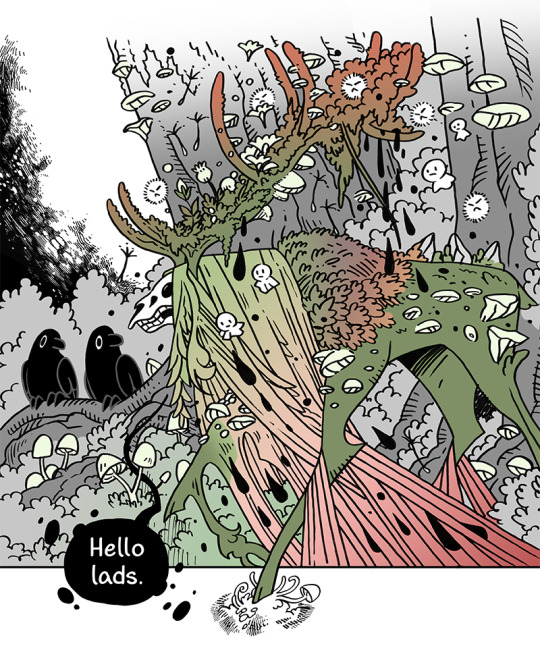
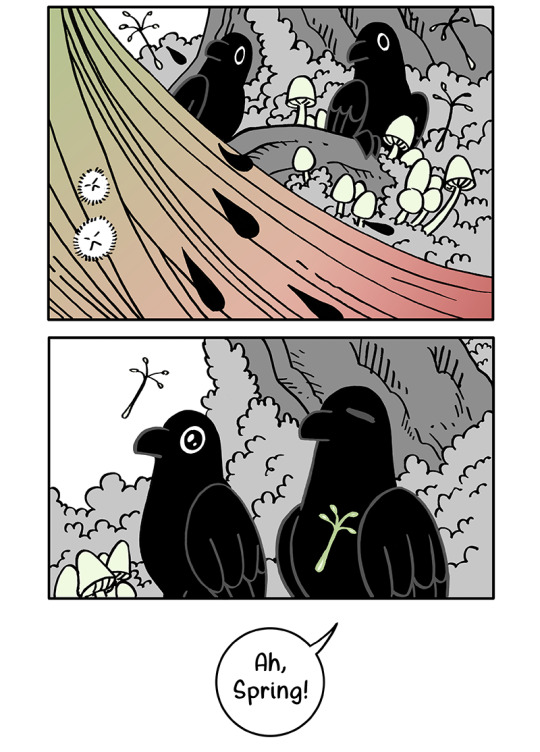
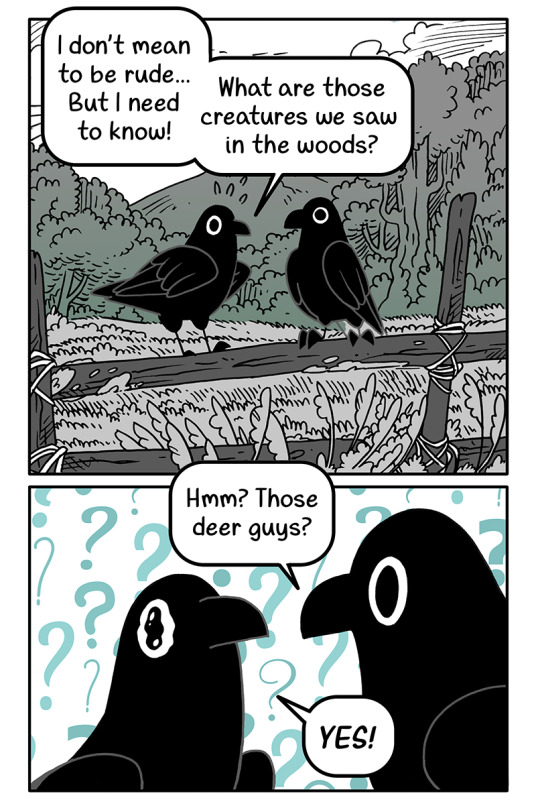
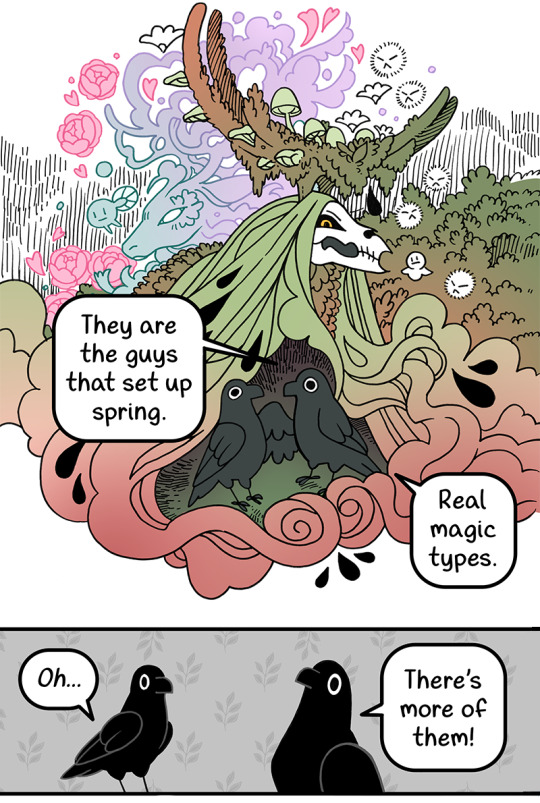
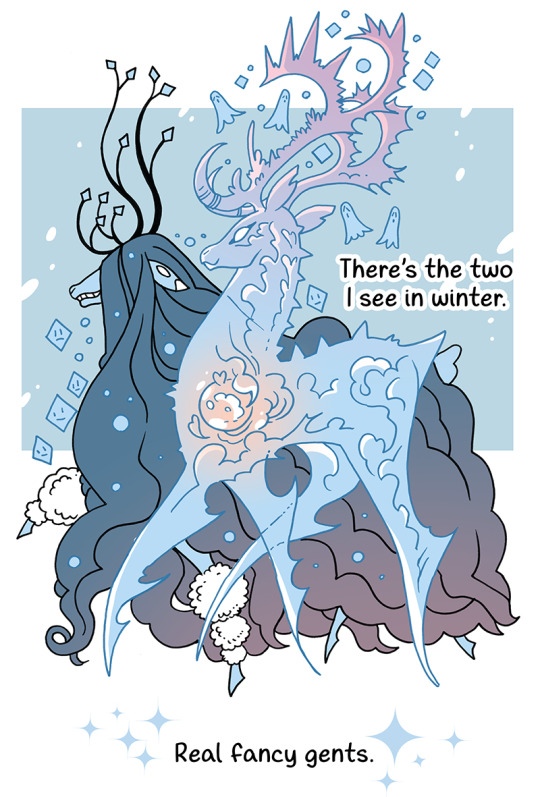
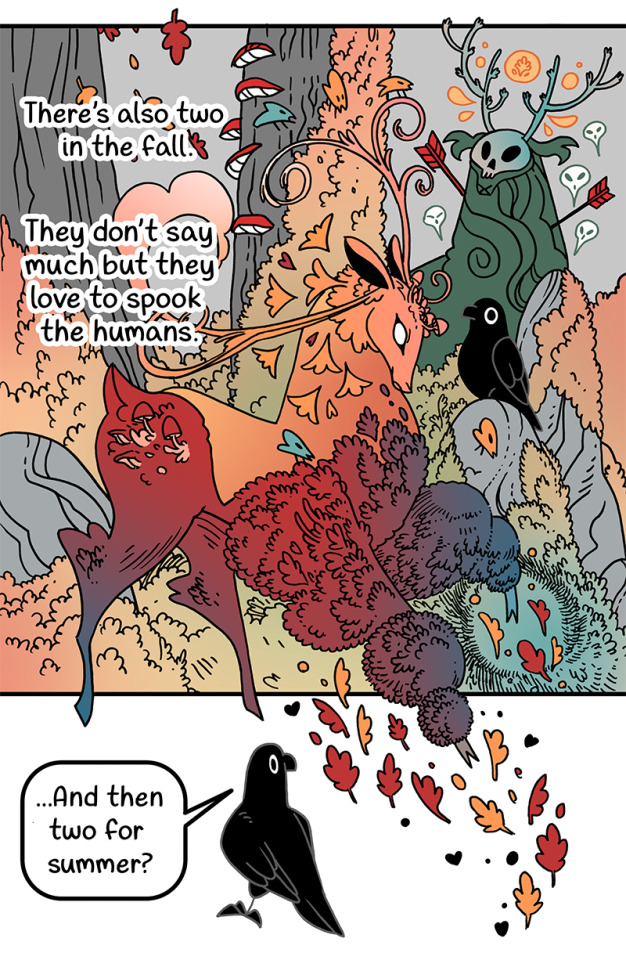


Check out my ongoing comic Crow Time. It has crows, and also neat pantheons of epic beasties.
314K notes
·
View notes
Text
My dear lgbt+ kids,
Here are some good things that happened in 2022!
January:
Canada bans conversion therapy
Greece allows gay men to donate blood (for the first time in 45 years!)
Israel legalizes surrogacy for gay couples
People in Switzerland are now able to legally change their gender without having to undergo surgery first
February:
New Zealand bans conversion therapy
Nonbinary people in Columbia are now entitled to a birth certificate with a "nonbinary" sex marker
Nayarit (Mexico) allows same-sex couples to adopt
Kuwait overrules a law that has been used to criminalize transgender people
Jowelle de Souza makes history as the first openly transgender parliamentarian in the Caribbean (Trinidad and Tobago)
March:
Chile legalizes same-sex marriage
France removes the deferral period for gay men donating blood
The United States announces an overhaul of TSA protocols to implement gender-neutral screening at checkpoints
Wales (United Kingdom) bans conversion therapy
Kristin Crowley makes history as the first openly gay (and the first female) chief of the Los Angeles Fire Department (United States)
Diana Zurco makes history as Argentina’s first openly transgender newscaster
April:
Santa Catarina (Brazil) now allows nonbinary people to change their gender marker without having to file a lawsuit
Jalisco (Mexico) bans conversion therapy
The United States issues the first passport with a nonbinary gender 'X' option
May:
Greece bans conversion therapy
Lithuania allows gay men to donate blood
Croatia allows same-sex couples to adopt
Austria removes the deferral period for gay men donating blood
June:
Hidalgo (Mexico) now punishes people offering conversion therapy with up to 3 years in prison
Quebec (Canada) allows people to be classified as a parent (rather than a mother or father) on their child's birth certificate
North Carolina (United States) no longer demands proof of surgery from people who wish to change their gender marker
Spain prohibits employment discrimination on the basis of sexual orientation, gender identity or HIV status
Kamala Harris made history by hosting the first Pride Month reception by a sitting vice president at their residence (United States)
July:
Switzerland legalizes same-sex marriage
Antigua and Barbuda legalize "same-sex behavior"
Andorra decides to legalize same-sex marriage (the law will come into effect in 2023)
Slovenia legalizes both same-sex marriage and adoption
Ariana DeBose makes history as the first queer woman of color (and the first Afro-Latina) to win an Oscar for acting (United States)
August:
India expands the definition of family to include "queer relationships"
Chile equalizes the age of consent
In Saint Kitts and Nevis, same-sex activity is no longer illegal.
Vietnam declares that homosexuality is not a disease and bans conversion therapy
Ellia Green makes history as the first Olympian to come out as a trans man (Australia)
September:
In India, the State Medical Councils can now take disciplinary action against doctors who provide conversion therapy
Cuba legalizes both same-sex marriage and adoption
Durango (Mexico) legalize same-sex marriage
Canada removes the deferral period for gay men donating blood
Kim Petras and Sam Smith make history as the first openly transgender woman and the first openly nonbinary person to reach number one on the Billboard Hot 100 (United States)
October:
Latvia allows civil unions for same-sex couples
Paraguay bans conversion therapy
Byron Perkins makes history as the first out football player at HBCU (United States)
Duda Salabert and Erika Hilton make history as the first two openly transgender people elected to the National Congress of Brazil
November:
Singapore decriminalizes gay sex
Singapore also lifts censorship of lgbt+ media
Hidalgo becomes the first state in Mexico to recognize nonbinary people
Ireland removes the deferral period for gay men donating blood
December:
Barbados legalizes "same-sex acts"
Here is to more good news in 2023!
With all my love,
Your Tumblr Dad
4K notes
·
View notes
Text
“Nobody wants to work anymore” wrong. I never wanted to work in the first place
44K notes
·
View notes




